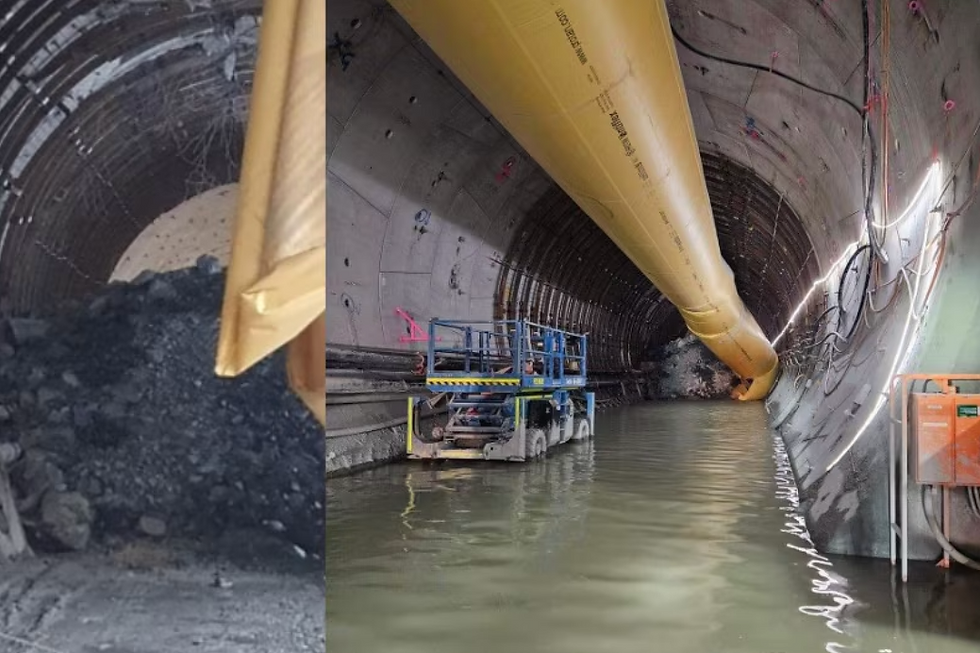Pumped hydro causes chaos and destruction with little benefit
- Save Eungella

- Apr 29, 2023
- 3 min read
Updated: May 8, 2023
Pumped hydro is a form of energy storage that involves using electricity to pump water to an elevated reservoir, which can then be released back down to a lower reservoir through turbines to generate electricity when needed. While this technology has been touted as a solution to energy storage challenges, it has also been linked to chaos and destruction with little benefit.
One of the biggest issues with pumped hydro is the negative impact on the environment. To create pumped hydro facilities, massive amounts of land must be flooded, which can destroy critical ecosystems and disrupt natural habitats. For example, the Belo Monte Dam in Brazil, which is a pumped hydro facility, has resulted in the displacement of tens of thousands of people, the destruction of vast areas of rainforest, and a significant impact on indigenous communities.
Moreover, the construction of pumped hydro facilities can result in significant environmental degradation. The construction of the Ilisu Dam in Turkey, for example, involved the relocation of over 70,000 people and the destruction of thousands of acres of natural habitat, including critical wetlands and forests. Similarly, the construction of the Three Gorges Dam in China has resulted in significant environmental degradation, including increased erosion, landslides, and the destruction of important cultural sites.

In addition to the environmental impact, pumped hydro facilities can also have a significant impact on local communities. The construction of these facilities can result in the displacement of local communities and the destruction of homes, businesses, and cultural sites. In some cases, the construction of these facilities has also been linked to social unrest, including protests and violence.
Furthermore, the costs associated with pumped hydro facilities can be significant. The construction and operation of these facilities can require billions of dollars in funding, and many projects have experienced significant cost blowouts. For example, the construction of the Xayaburi Dam in Laos was originally estimated to cost $3.5 billion but ended up costing over $11 billion. Similarly, the construction of the Hidroituango Dam in Colombia was originally estimated to cost $1.8 billion but has since ballooned to over $7 billion.
Additionally, the construction of pumped hydro facilities can be plagued by construction issues, including delays, design flaws, and safety concerns. For example, the construction of the Oroville Dam in California was delayed due to design flaws and safety concerns, resulting in significant cost overruns and a major spillway failure that forced the evacuation of over 180,000 people. Similarly, the construction of the Itaipu Dam in Brazil and Paraguay was delayed due to design flaws, resulting in significant cost overruns and safety concerns.

Finally, despite the significant investment in these facilities, the performance of pumped hydro can be poor. These facilities can be vulnerable to weather conditions, which can impact their ability to generate electricity. Additionally, the efficiency of pumped hydro can be low, with losses during the pumping and generation process. For example, the Dinorwig Power Station in the UK, one of the largest pumped hydro facilities in Europe, has an efficiency of around 75%.
In conclusion, while pumped hydro has been touted as a solution to energy storage challenges, it has also been linked to chaos and destruction with little benefit. The negative impact on the environment, communities, the costs, construction issues, cost blowouts, and poor performance associated with pumped hydro facilities make it a questionable investment for governments and energy companies. Alternative solutions, such as battery storage, should be explored to ensure sustainable and responsible energy storage for the future.
References
International Rivers. (n.d.). Belo Monte Dam. https://www.internationalrivers.org/campaigns/belo-monte-dam
International Rivers. (n.d.). Ilisu Dam. https://www.internationalrivers.org/campaigns/ilisu-dam
International Rivers. (n.d.). Three Gorges Dam. https://www.internationalrivers.org/campaigns/three-gorges-dam
International Rivers. (2021). Xayaburi Dam. https://www.internationalrivers.org/campaigns/xayaburi-dam
International Rivers. (n.d.). Hidroituango Dam. https://www.internationalrivers.org/news/blog-lives-lost-and-more-under-threat-in-the-wake-of-colombias-largest-dam-crisis
ABC News. (2017). Crumbling California dam spillway prompts urgent evacuation calls; authorities remain on alert https://www.abc.net.au/news/2017-02-13/oroville-dam-northern-california-threatens-collapse-evacuate/8265532
BBC News. (2019). Dinorwig Power Station: Inside the UK's hidden power station. https://www.bbc.co.uk/programmes/p06zxtrt
REN21. (2021). Renewables 2021 Global Status Report. https://www.ren21.net/gsr-2021/



